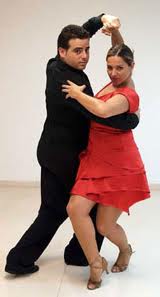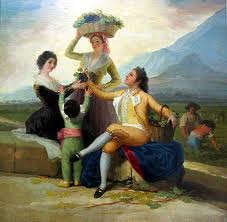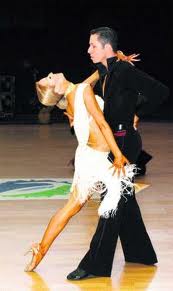Bolero

There are two types of Bolero. The Bolero that was invented in Spain during the 18th Century and the Bolero that originated in Cuba. The two dances are different in both origins and style. The Spanish Bolero dance was a dance that combined the 'contrandanza' and 'sevillanas' dances. According to some experts, the dance was first invented by Sebastiano Carezo in 1780.
Bolero History
In Spain, during the 18th Century, the Bolero actually had many different names. It was called 'Escuela Bolera', 'Baile de Palillos' and 'Goyescas'. Bolero originated as a fusion of popular dances and classical ballet in order to produce a dance that was fit for shows, and not just for fiestas. Popular dances were not dances that were not learnt or studied in Spain. There were diverse, traditional and numerous. Practically every town in Spain had its own separate dance.

The last name, 'Goyescas' comes from the name of the famous Spanish painter, Francisco Goya, who lived around this time. Goya also immortalised these popular dances in some of his works, including 'La Vendriama', 'Las Floreras' and 'El parasol'.
This 18th Century Spanish dance has its roots in the Spanish region of Castilla-La Mancha, but had counterparts that were extremely similar such as the 'sevillanas'. It was here that steps from Classical Ballet began to be combined with typical 18th Century expressions and moves.
Later, more focus was given to the steps and the structures in the 'Goyescas', which then eliminated the improvisation on the part of the dancer. The Bolero also developed many variations but most importantly, it became one of the most popular dances in Spain, being danced regularly in Madrid, Seville and the South of Spain.
The Bolero began originally as a dance for a couple but later on it began to be adapted for larger venues that required more dancers with more technical moves and choreography. The development of the Bolero for a theatre setting was due in part to the influence of Italian Ballet specialists who often performed in Spain during this time.
However, it was during the 19th Century that the Bolero really began to shine with the opening of the 'Escuela Bolera'. Spanish dancers often performed the Bolero in other countries in Europe and it soon became the dance to know in many European capital cities. The Bolero also benefited from the contact with European Romantic and Post-Romantic Ballet, from 1835 to 1880.

This success continued into the 20th Century, with the 'Escuela Bolera' expanding with many more Spanish schools in Spain. From 1940 to 1965, numerous Spanish dancers and dance companies included a performance of the Bolero in their shows. It is a shame therefore that since that time, little interest has been shown in the Spanish dance. This is due mostly to the increasing focus on Flamenco. However there are still those who practise the Bolero and protect it from extinction.
Furthermore, the Bolero has been used in some instrumental pieces of music. A form of the Bolero was used in the 1968 album 'Truth' by Jeff Beck as well as in the song 'Chunga's Revenge' by Frank Zappa in 1970.
The Bolero, whose music is in the 3/4 metre and a moderately slow tempo, consists in three 'coplas' or verses. Each copla lasts for 36 bars. A copla is also made up of 3 parts which, when finished, are followed by a swap in the positioning of the dancers which is called a 'parada'. A complete copla is then finished with a 'bien parado' or a dramatic pose, a classic feature of Spanish dances. As though that is not enough, the Bolero dancers also have to play the castanets.
